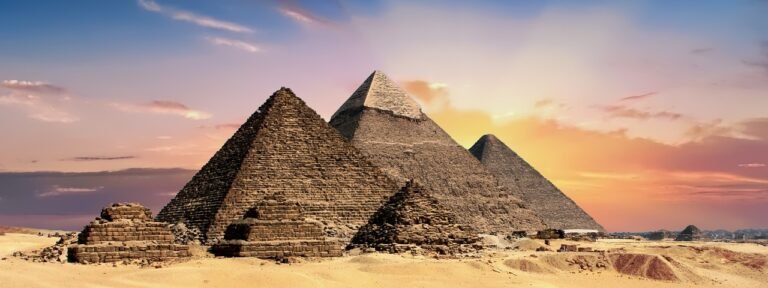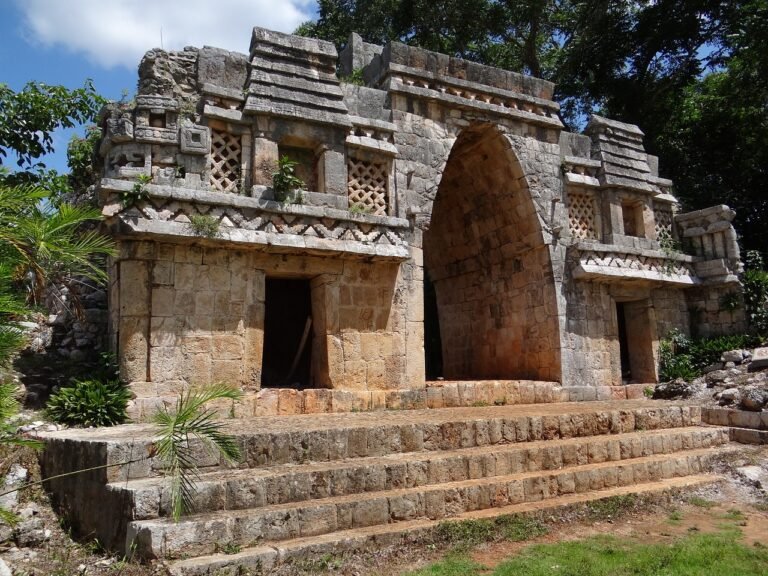
10 Ancient Civilizations That Were Destroyed by Climate Change
Civilizations rose and flourished throughout history, then contributed pain, culture, innovation, and power. However, it is not only through the rise and demise of ancient civilizations by wars, invasions, and political instability, but many of them have also succumbed to the devastation of climate change. Hence tagging this article analyzing the impact of climate change on 10 ancient civilizations that were destroyed or devastated.
1. The Akkadian Empire
The Akkadian Empire (circa 2334-2154), which usually has been regarded as the first global empire, thrived in a part of Mesopotamia. It had pledged all the cultural advancements and economic prosperity, but was caused to decline by perhaps 1 of the worst megadroughts. It lasted for almost 300 years and devastated agricultural production, created conditions of food shortage, and resulted in a lot of unrest. The Akkadian Empire could not maintain its population, could not resist outside pressure, and fell.
2.Egypt's Old Kingdom (Ancient Civilizations )

Egypt’s Old Kingdom (2686-2186 BCE) is referred to sometimes in terms of its architectural and cultural achievements as the “Age of the Pyramids.” A dry event called the First Intermediate Period disrupted the complete cycle of flooding in Egypt’s Nile. Regular occurrence of both heavy and light annual floods often led to poor harvests followed by famine. Economic status deterioration and social unrest were responsible for the fragmentation of the kingdom, then caused its demise.
3. The Indus Valley Civilization
The Indus Valley Civilization existed between circa 3300 1300 bce, making it one of the most advanced civilizations of its time, spreading across the territories of present-day Pakistan and northwest India. The cities built above ground displayed sophisticated engineering of water management as well as urban planning. But the change in the pattern of monsoons and decline in rainfall lead to a water famine, which resulted in reduced productivity in agriculture. These availabilities of dwindling resources forced societies to abandon the urban locations of Mohenjo-Daro and Harappa.
( Ancient Civilizations)
4. The Minoan Civilization
It was a civilization, which thrived during the period (c. 2000-1450 BCE), based primarily on the island of Crete. The Minoans were prosperous traders in the Bronze Age, making their strength through the arts, trade, and architecture. But, there was an eruption by a volcano, which is the best example of the eruption of Thera. And then, climatic changes started occurring due to which the whole region started getting unstabilized. ( Ancient Civilizations)
Tsunamis, ash clouds, and occasional shifts in weather patterns caused havoc for agriculture and trade after which collapse was bound to occur within the civilization.
5. The Maya Civilization

Maya civilization existed from around 2000 BCE to 1600 CE. They inhabited the places which are now Mexico and Central America and manifested great skills in building fantastic pyramids, devising a complex writing system, as well as making astronomical discoveries. Prolonged droughts from 800 to 1000 coincided with the collapse of the Classic Maya civilization. Deforestation, overpopulation, and degradation of the environment caused a multiplication of the effects of climate change, which led to a nationwide societal breakdown.
- The Ancestral Puebloans
The Ancestral Puebloans, also called Anasazi, left and built magnificent cliff dwellings in the southwestern United States between 100 and 1600 CE, and in the periods of drought, particularly the Great Drought (1276-1299 CE), ( Ancient Civilizations)
there were serious effects on the supplying of water and reduced the probability of agricultural production. The environmental challenges became too overwhelming for these societies, and they all left their settled areas and left fantastic archaeological sites, such as Mesa Verde.
- The Norse Greenland Settlements
Norse settlers arrived in Greenland and established colonies by around 985 CE. The settlement survived for hundreds of years on farming and commerce, but the Little Ice Age (about 1300 to 1850 CE) brought much colder temperatures, shorter growing seasons, and worse winters.The Norse Greenland settlements were abandoned sometime during the 15th century, as they could not adapt to all these changes in climate.
- Tiwanaku Civilization
Between 500 and 1100 CE, the Tiwanaku civilization stretched along the Andes and was an early civilization also called pre-Inca, well-known for its innovations in agriculture and architecture. A time of major drought around 1000 CE lowered the water levels in Lake Titicaca severely, interrupted the irrigation system, and caused havoc in food production. The socio-economic tensions produced by this calamity contributed to the emergency of the crisis of the civilization. ( Ancient Civilizations)
- The Khmer Empire
Though the Khmer Empire (802-1439 CE, which was at the heart of modern Cambodia) constructed such an iconic monument as Angkor Wat, its external strength as one of the most powerful empires in Southeast Asia was brought down by inconsistent monsoon patterns and periodic droughts over a number of years throughout the 14th century. These uneven moisture levels alternated between floods and droughts, damaging the infrastructure for their irrigation system and destabilizing the economy, which contributed to their fall.
- Easter Island Civilization
The civilization of Easter Island, or Rapa Nui, is most renowned for its giant stone statues (moai). Although the people first settled around the year 1200 CE and proceeded to flourish culturally, it was only latent deforestation and overexploitation together with climate change-triggered topsoil erosion and fall in food production that supervened social conflicts to cause the collapse of Easter Island’s society.
The Past Lessons
Thus, they caution societies about what climate change can do to them. It underscores the need for sound resource management practices and keeping the proactive posture to counter such adverse environmental changes. Modern technology and cross-national partnerships provided countries, the means and opportunities to avert the effects of climate change; for all these though, the fates of the civilizations of old must still carry weight for such decisive action to be taken for a sustainable future.
Frequently Asked Questions
Q1: What was climate change’s role in ancient societies?
A: It disrupted agricultural production and supply of water and trade routes thus creating food shortages, economic instability, and societal collapse.
Q2: Were these civilizations aware of the environmental changes?
A: They did not quite have the scientific knowledge for identifying or combating those very large scale climatic changes but perhaps noticed some weather pattern changes along with resource availability.
Q3: What lessons can modern societies learn from ancient collapses?
A: Yes, these experiences can help the modern society construct ways in which they can sustainably manage their resource use as well as mitigate against climate change.
Q4: Which ancient civilization had most damage from drought?
A: The Akkadian Empire, the Maya, and the Ancestral Puebloans, among many others, faced searing droughts, ultimately contributing to their decline.
Q5: How did volcanic eruptions affect the ancient civilization?
A: Volcanic eruptions resulted in major climatic changes through the expulsion of clouds of ash and gases to the atmosphere making the ambient temperatures lower, thus affecting agriculture and in a few cases, even leading to collapse of societies.
Thus, based on how the climate change contributed to the collapse of ancient societies, we can have knowledge about how fragile or important it would be for civilizations to adjust with their environment.




